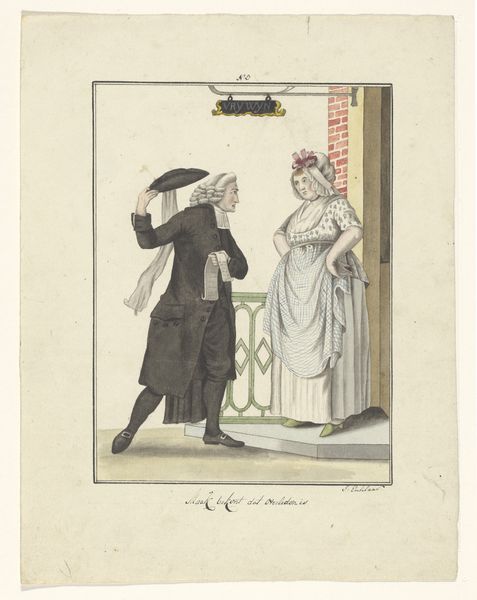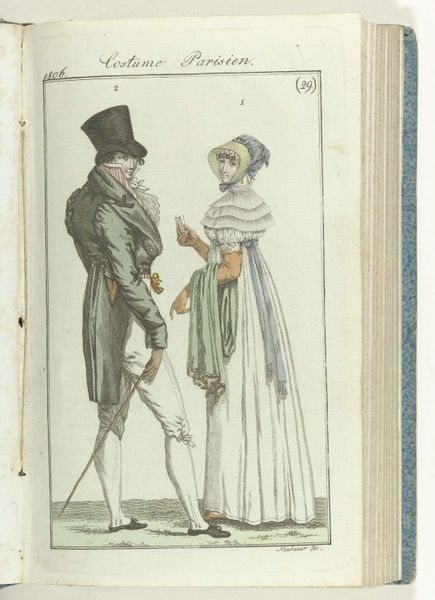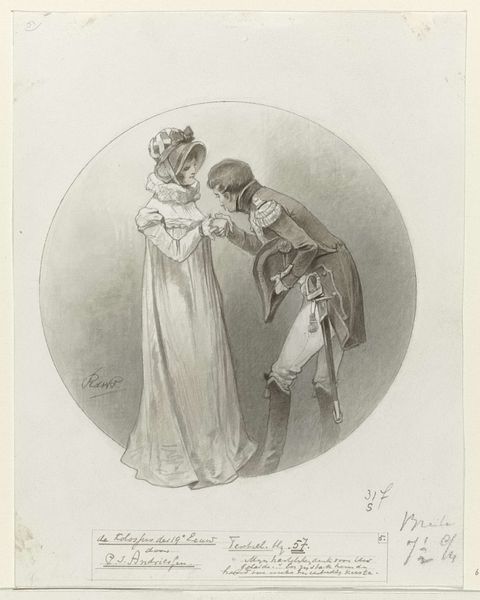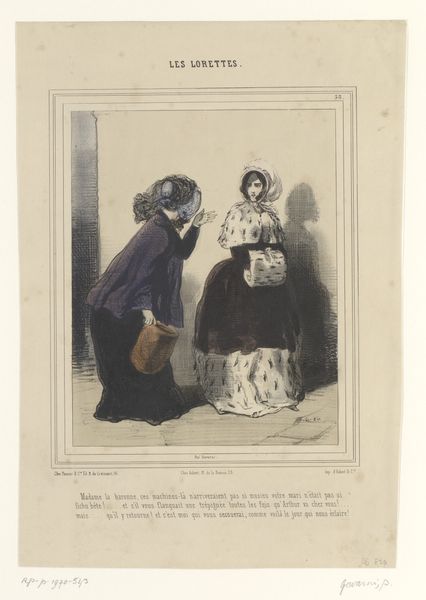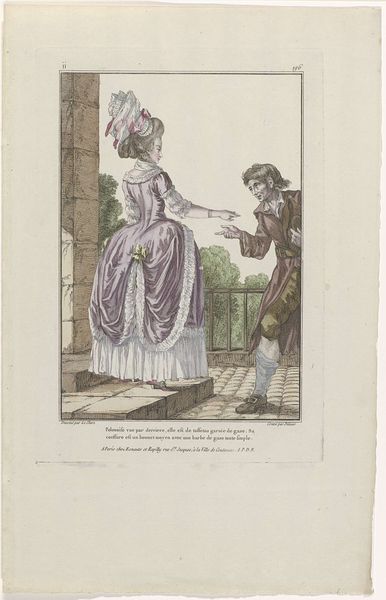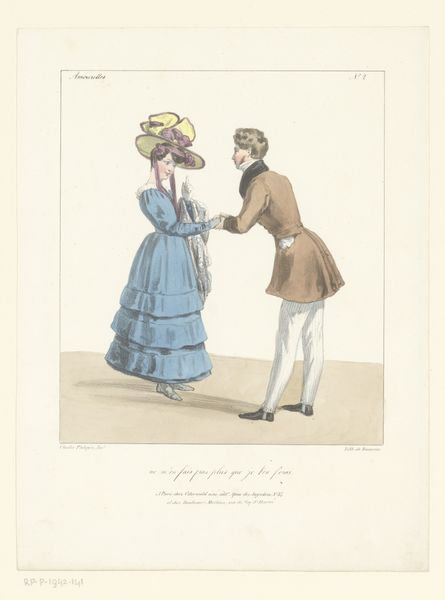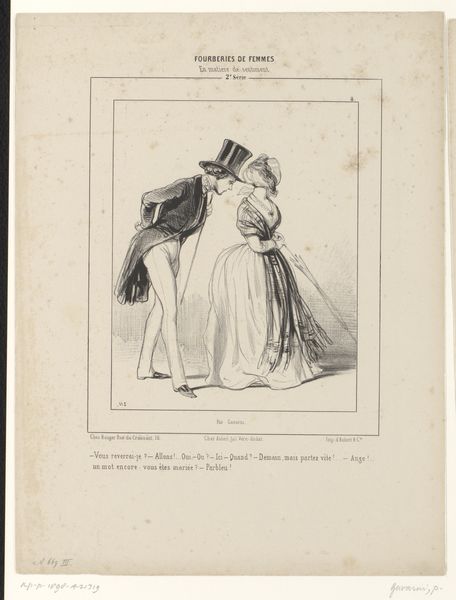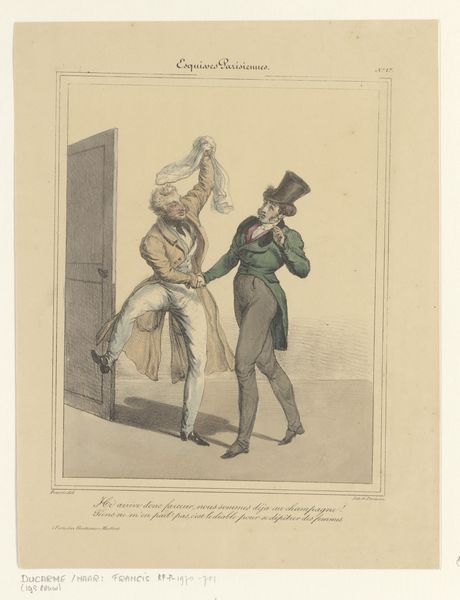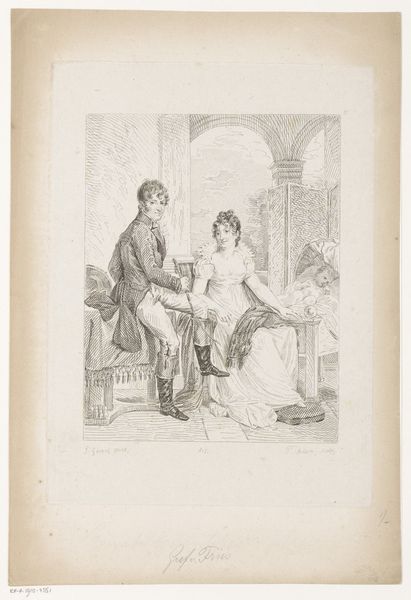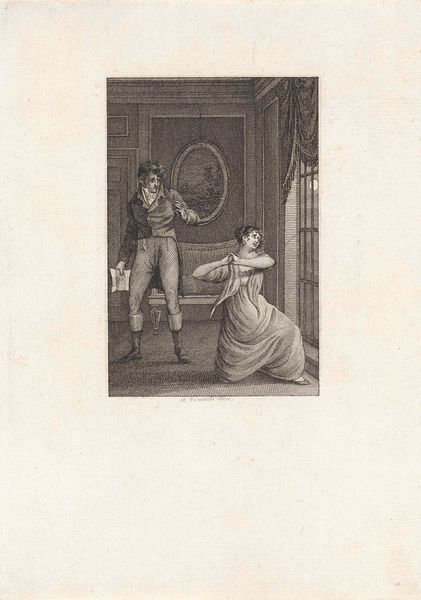
Modes et Manières du Jour, 1799-1800, No. 24: Prends vite; (...) 1799 - 1800
print, etching, engraving
etching
figuration
romanticism
watercolour illustration
genre-painting
history-painting
engraving
Dimensions: height 190 mm, width 129 mm
Copyright: Rijks Museum: Open Domain
Curator: Looking at this hand-colored etching and engraving by Louis Philibert Debucourt, titled "Modes et Manières du Jour, 1799-1800, No. 24: Prends vite; (...)," my eye is immediately drawn to the interplay of hurried gesture and subtle elegance. What is your first impression? Editor: There's a charged moment hanging in the air, isn't there? It feels conspiratorial, almost a clandestine exchange frozen in time. The woman is statuesque in white; the boy below looks like a little pawn caught between realms of propriety. Curator: Debucourt masterfully captured the style of the Directory period, what with the Empire silhouette of her gown. Note the neoclassical influence with her high waist, flowing fabric, and relatively unadorned hairstyle. "Modes et Manières du Jour" was after all a series documenting contemporary Parisian fashion. This image provides valuable insights into how the revolutionary aesthetic took shape. Editor: But even the aesthetics have a political context. These very styles that signaled departure from aristocracy soon become markers of class themselves. The etching is a chronicle of a young Republic struggling with a rapidly re-stratifying society and gendered anxieties. What do you make of their gestures? Curator: The title, "Prends vite," translating to "Take it quickly," emphasizes the urgency. It brings forth multiple potential readings, the hand-off alludes to a transaction or clandestine mission, rendered all the more impactful with the two figures hiding in the background observing the spectacle. What stands out to me as well, is how the symbol-laden doorway further represents this state of in-betweenness: poised but also hurried. Editor: Absolutely. She dominates the visual space—her clothing, even in its seeming simplicity, speaks of wealth. His masked face is compelling because the covering signifies protection during public upheaval yet also signifies that the class difference renders their very meeting a clandestine affair. How do you see these historical pieces speaking to contemporary discussions of class and societal change? Curator: Well, art continually serves as a lens through which we can reflect on social power. The quick brushstrokes and hurried exchange capture that sense of transition. Debucourt captured a fleeting moment, imbued it with symbolic heft and it seems to me these figures symbolize change, transition, urgency, the building blocks of culture itself. Editor: And by interrogating this era, we confront the ever-repeating nature of historical inequality and the masks donned to survive it. Thank you for illuminating its visual richness, a subtle etching offering layers of socio-political narrative.
Comments
No comments
Be the first to comment and join the conversation on the ultimate creative platform.
